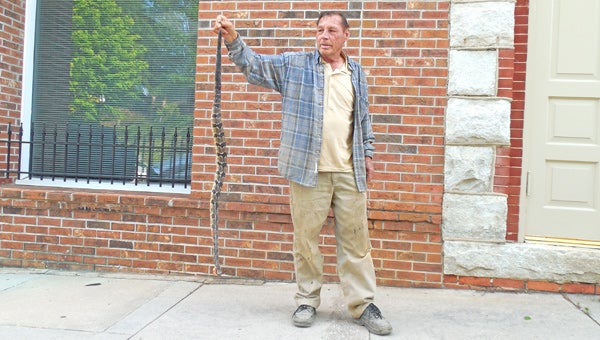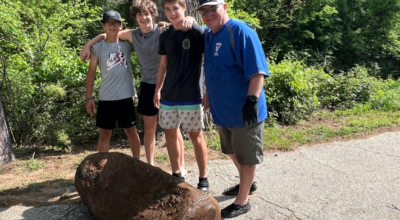Eastern Diamondback Rattlesnake found on Hwy. 176
Published 10:00 pm Sunday, May 25, 2014
Local resident, Ben Hudson found this Eastern Diamondback Rattlesnake on Hwy. 176 early Thursday morning. The snake had been recently struck by a vehicle and had died as a result.
The Eastern Diamondback Rattlesnake is the largest venomous snake species in North America. Though it has been known to reach 8 feet in length, the average size is 5-7 feet.
This snake species can be very helpful to farmers, as it commonly feeds on rats and other rodents. However, being a potently venomous snake, the rattlesnake is usually rightfully feared by humans, and therefore often killed.
It is believed that the rattlesnake will only bite as a last resort, as they prefer to hide during the day in burrows or under leaf litter. Though it is what they are known for they do not always “rattle” as a warning; they will often stay silent, hoping to go unnoticed.
The venom from a rattlesnake bite contains a powerful hemotoxic that attacks the red blood cells and can also causes tissue damage, and a neurotoxic, which effects nerves. The venom can cause blistering, nausea, headaches, tingling sensation, skin discoloration and swelling. If untreated, the venom can also cause death.
If bitten by a rattlesnake, experts recommend keeping calm, keeping the wound below heart level, and seeking immediate medical treatment. Do not try to “suck” out the venom – doing this can sometimes cause more damage by contaminating the site with bacteria from the mouth, or allowing the venom to enter any wounds in the mouth or lips.
St. Luke’s Hospital in Columbus does keep antivenom for rattlesnake bites, since this snake is common in the area.






